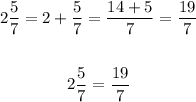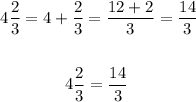We want to do the following multiplication:

Let's transform that into a normal fraction:

and the other fraction

Therefore we can multiply the following fractions:

The result is

Therefore

if we want we can write it in the same form as the others
Final answer
